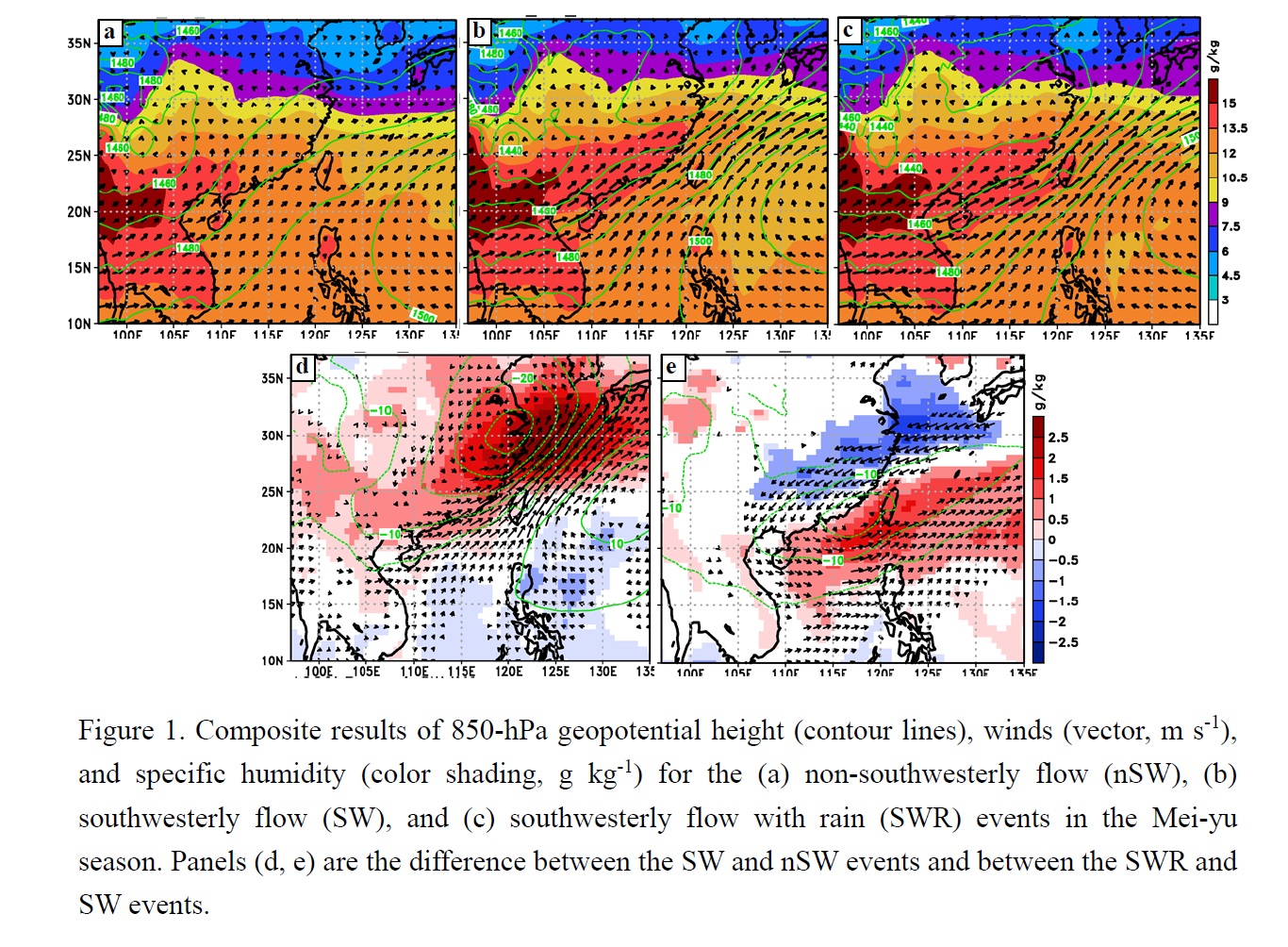Graphical Abstract
Chien, F.-C., and Y.-C. Chiu, 2019: A composite study of southwesterly flows and rainfall in Taiwan. J. Meteor. Soc. Japan, 97, 1023-1040.
https://doi.org/10.2151/jmsj.2019-057
Graphical Abstract with highlights
Plain Language Summary: Southwesterly flows formed in Mei-yu season due to a deepening mid-latitude trough over eastern China and the southwestward extending Pacific high. The southwesterly flow axis was located roughly over Taiwan, and it shifted southeastward as the Pacific high weakened. At the same time, the high moisture zone covered the northern South China Sea and the entire island of Taiwan. As a result, moisture-laden air was transported to the Taiwan area by the strong southwesterly flow, providing favorable conditions for continuous rain in Taiwan.
Highlights:
- Composite southwesterly flows around the Taiwan area are compared and their relationship with rainfall is discussed among different warm seasons: spring, Mei-yu, and summer.
- The percentage of southwesterly flow events in Taiwan was the highest in the Mei-yu season, followed by summer. When southwesterly flows occurred, chance of rain greatly rose.
- Southwesterly flows formed between a mid-latitude trough and the southwestward extending Pacific high. When the Pacific high retreated, rain was likely to happen in Taiwan.







